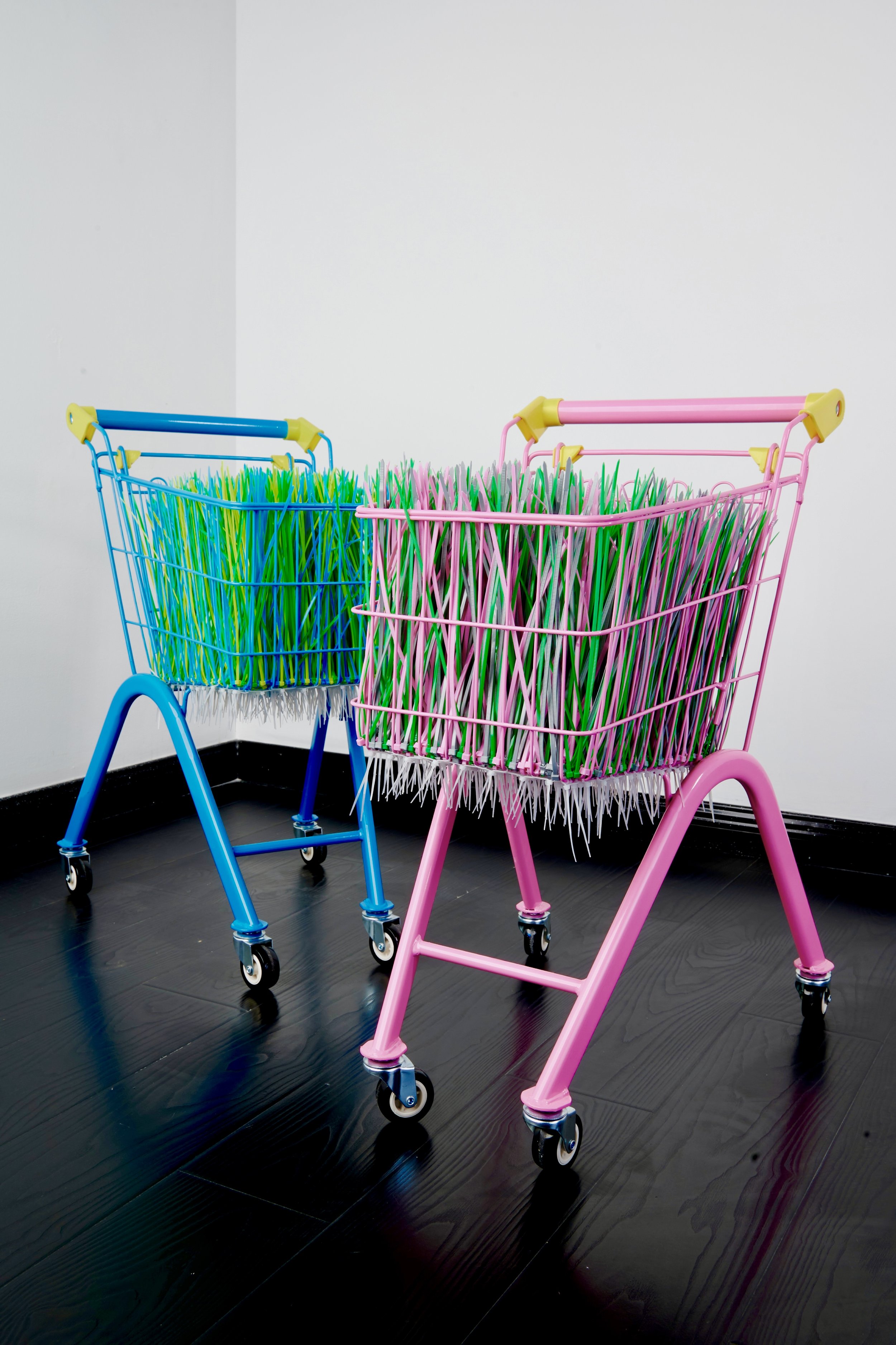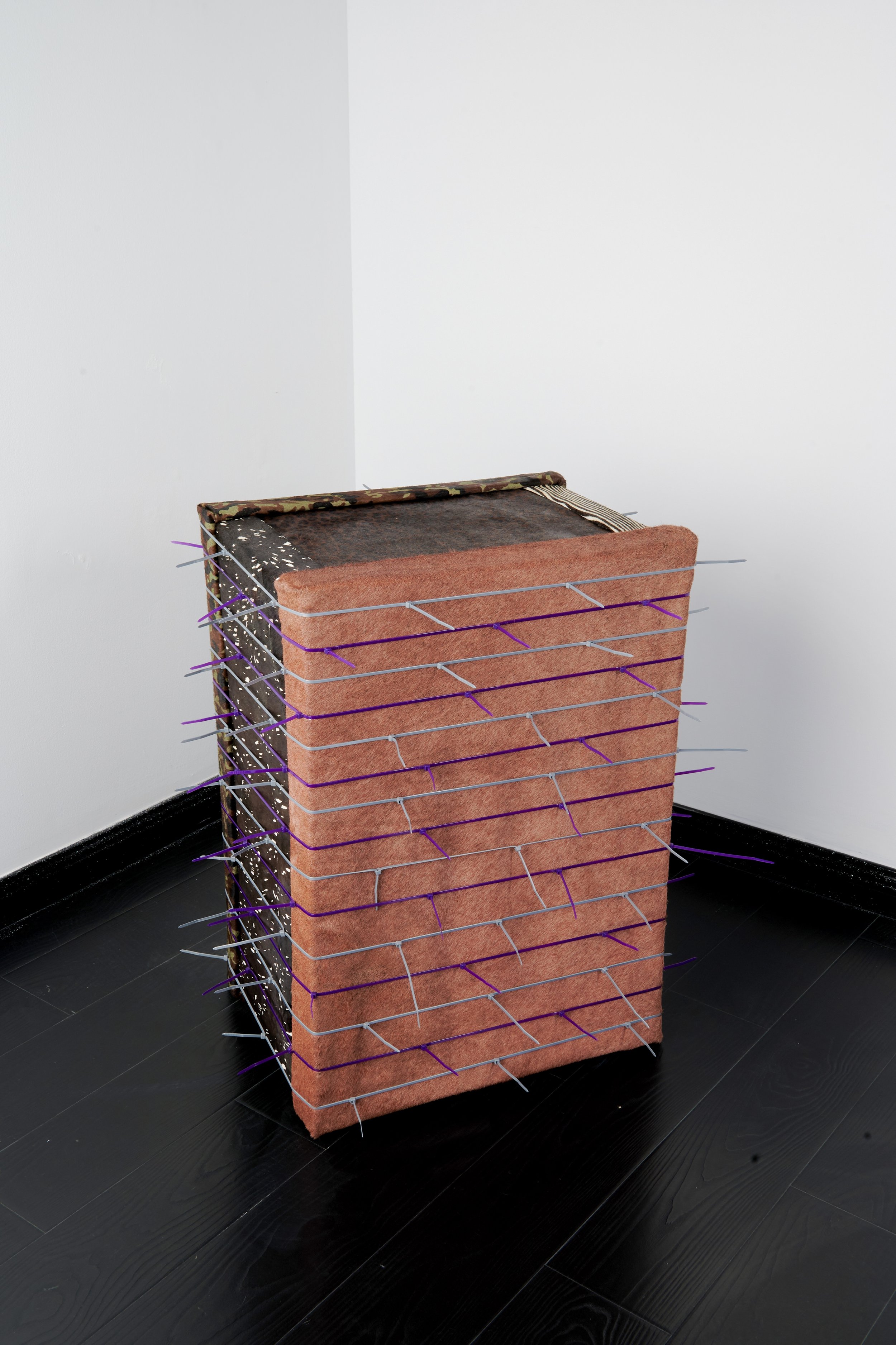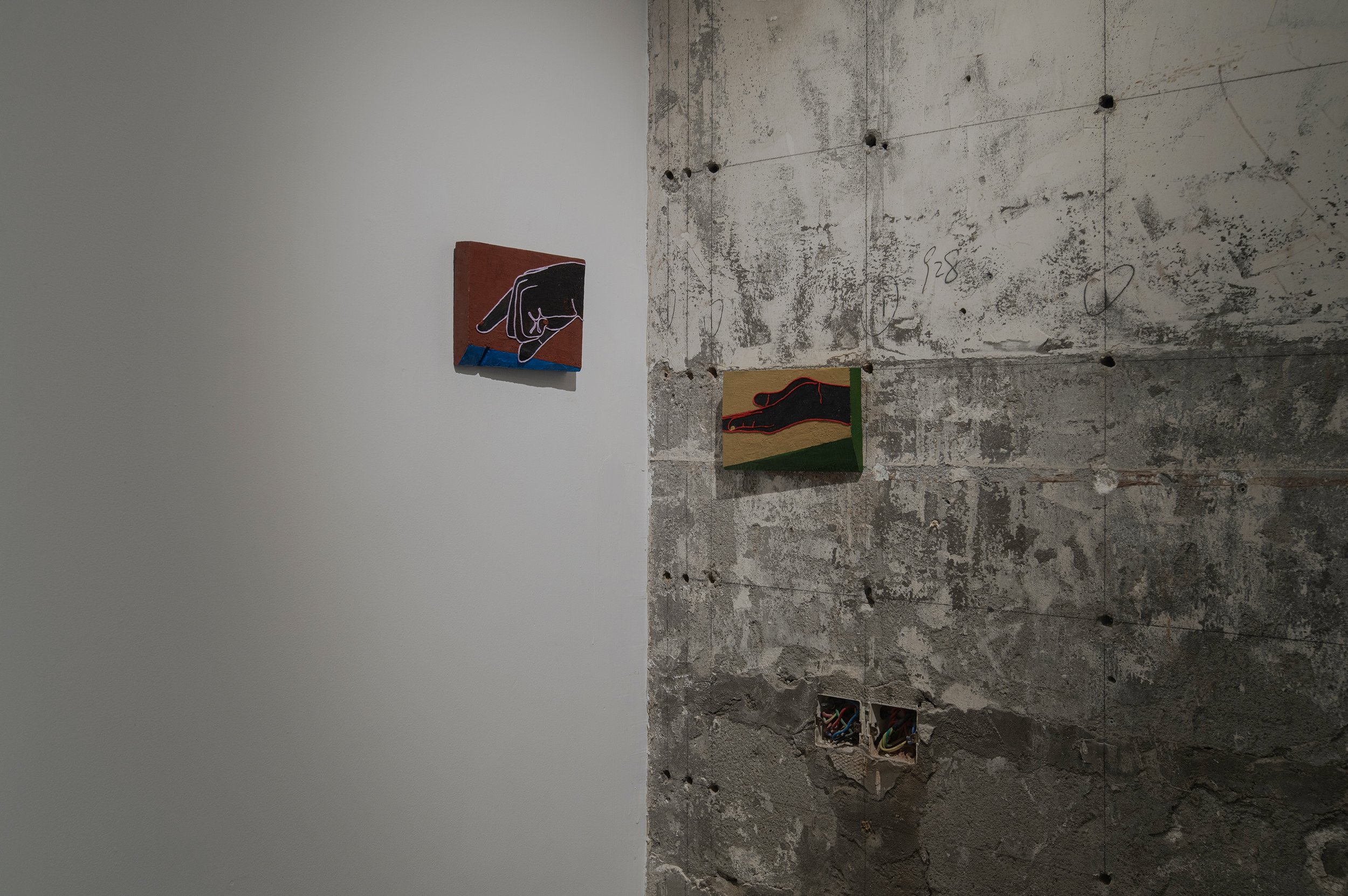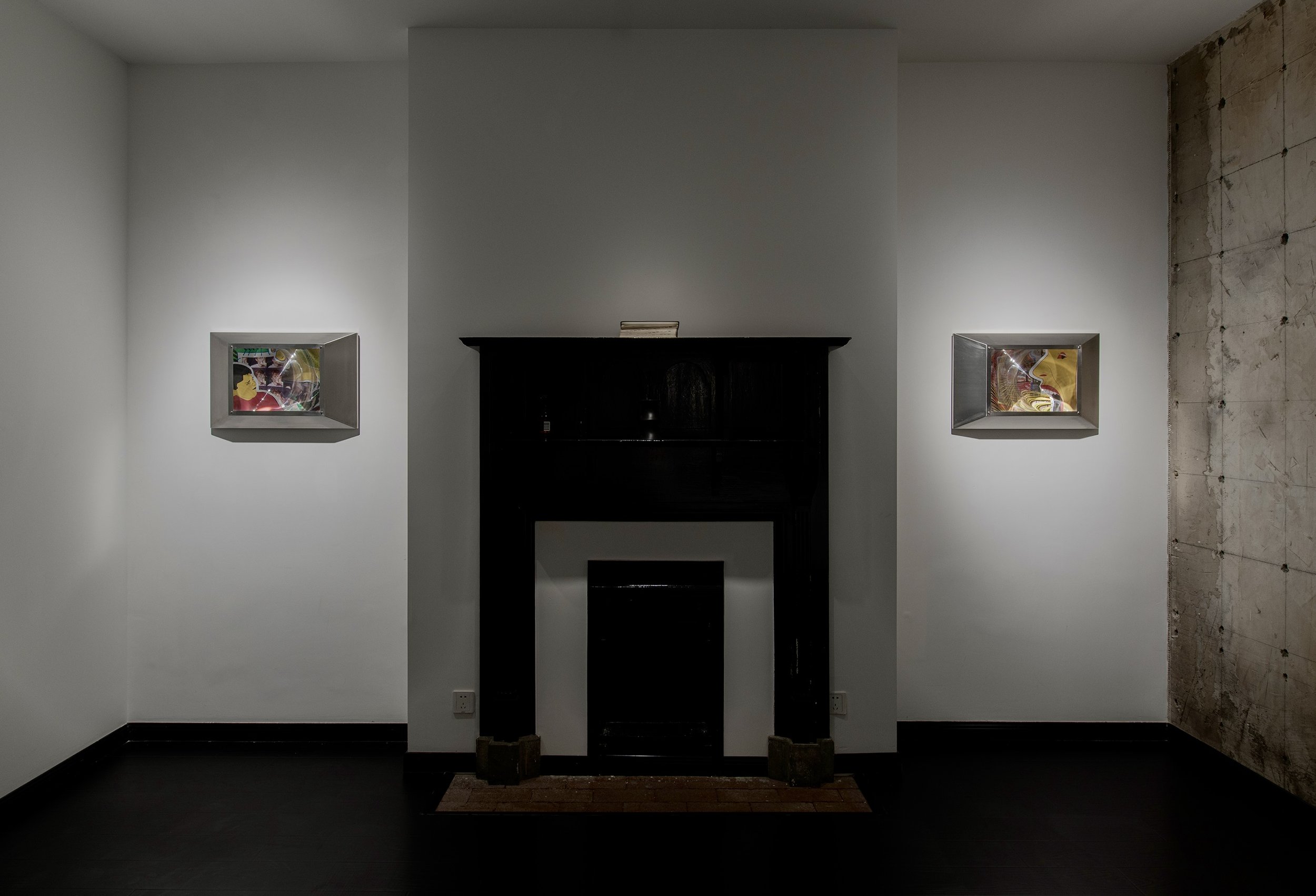Wei Sansan : Zhòng Cǎo
CHAPTER 6 is honored to present the solo exhibition “Zhòng Cǎo” by artist Wei Sansan. Wei Sansan’s creations have consistently focused on exploring the relationship between found materials and contemporary popular contexts. Based on the characteristics of these materials, she employs methods such as bricolage, dyeing, and painting to transform and combine them, producing mixed-media works that often have a visual and psychological contrast to the main concept.
The origin of consumer culture lies in the transition of the public from purchasing necessities to non-essentials, with the establishment of department stores in the early twentieth century marking a significant milestone. Since then, simple purchasing has evolved into a leisure experience. The core of promoting this consumer experience is an insight into human desires, which, leveraging feelings of jealousy, gave rise to the advertising industry. Is the prevalence of consumerism an inevitable aspect of social development? As we increasingly alienate ourselves in our daily labor, we seek spiritual satisfaction through consumption. Consequently, the inherent value and functionality of goods have become less significant; they have transformed into a lifestyle where individuals seek to establish their self-awareness through products, echoing Marcuse’s assertion: people recognize themselves through commodities.
The internet has dismantled geographical boundaries, allowing everyone to share experiences of possessing something and to search for like-minded individuals based on material criteria. Decision-making time has been shortened, enabling faster consumption. These traits precisely fulfill our psychological needs. From newspapers to radio and television, and now to the internet, the medium of communication is changing, yet what remains constant is the “simulation” of life (Emulation) that we can achieve through consumption, allowing us to temporarily transcend our current conditions. This transcendence is so fleeting that we desire to consume, exchange, and discard at an increasingly rapid pace—ultimately becoming producers of waste.
Wei Sansan does not position herself in opposition to consumerism to critique it from a distance. On the contrary, being embedded in it as a member of the waste producers, she utilizes a significant amount of discarded goods from production, as well as transportation and packaging materials, in her creative process. With a humorous, indifferent, and even childish attitude, she exposes her desires and contradictions in her works, presenting the public with a self-deprecating post-“Zhòng Cǎo” experience.







